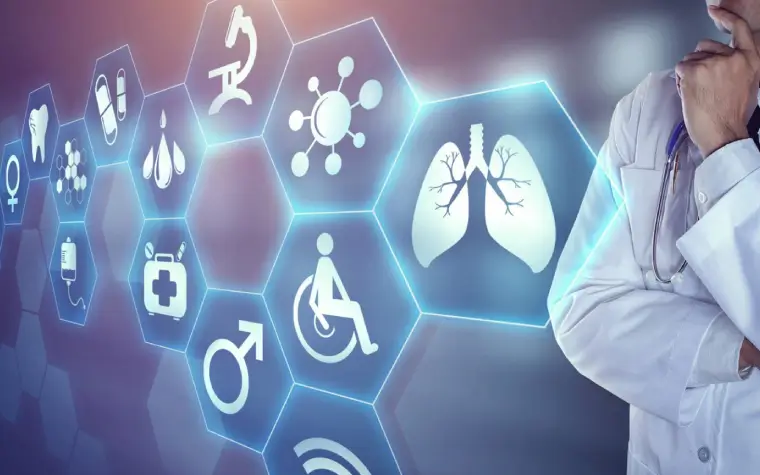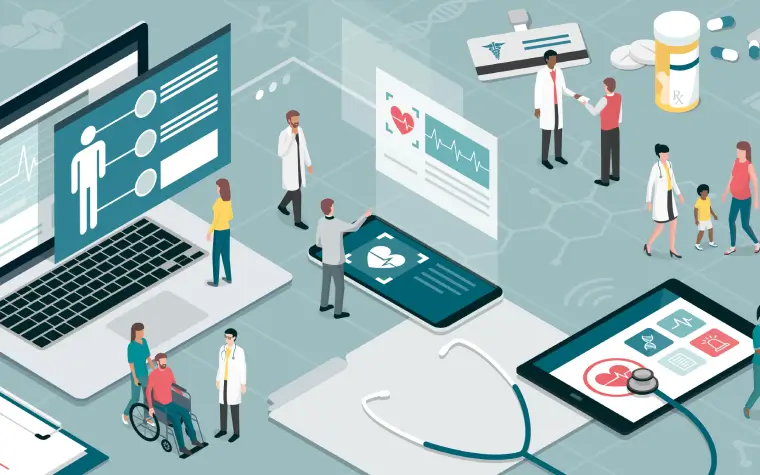
How IT Services Can Help Healthcare Organizations Improve Patient Care
Improving patient care is a top priority for healthcare organizations, and IT services can play a crucial role in achieving this goal. From electronic health records (EHRs) to telemedicine, technology can enhance the efficiency and effectiveness of healthcare delivery. In this article, we will discuss how IT services can help healthcare organizations improve patient care and provide the best possible outcomes for their patients.
1. Electronic Health Records (EHRs)
Electronic Health Records (EHRs) are digital versions of a patient’s medical history, including diagnoses, medications, lab results, and other pertinent information. With EHRs, healthcare providers can easily access patient data from anywhere, at any time. This eliminates the need for physical copies of medical records, which can be lost, damaged, or misplaced.
Moreover, EHRs allow healthcare providers to share patient data with other providers, ensuring that all medical professionals involved in a patient’s care are on the same page. This facilitates better communication and coordination among healthcare providers, leading to improved patient outcomes.
2. Telemedicine For Healthcare Organizations
Telemedicine is the use of technology to deliver healthcare services remotely. This includes video consultations, virtual check-ins, and remote monitoring. Telemedicine enables healthcare providers to reach patients who may not have access to healthcare facilities due to distance, transportation issues, or other barriers.
Telemedicines also provides a way for patients to receive care in the comfort of their own homes, which can improve patient satisfaction and reduce the risk of exposure to infectious diseases. Additionally, telemedicine can reduce healthcare costs by eliminating the need for in-person visits and reducing hospital readmissions.
3. Patient Portals
Patient portals are secure online platforms that allow patients to access their medical records, communicate with healthcare providers, schedule appointments, and request prescription refills. Patient portals enable patients to take an active role in their healthcare, which can improve patient engagement and satisfaction.
Patients portal also enable healthcare providers to deliver personalized care to their patients. For example, healthcare providers can use patient data to develop targeted health promotion and disease prevention strategies.

4. Health Information Exchange (HIE)
Health Information Exchange (HIE) is the sharing of patient data among different healthcare providers and organizations. HIE enables healthcare providers to access patient data from different sources, ensuring that they have all the information they need to provide the best possible care.
HIE also enables healthcare providers to coordinate care among different providers and organizations. This can improve patient outcomes by ensuring that patients receive the right care at the right time.
5. Artificial Intelligence (AI) For Healthcare Organizations
Artificial Intelligence (AI) is the use of computer algorithms to perform tasks that normally require human intelligence, such as problem-solving, decision-making, and natural language processing. In healthcare, AI can be used to analyze medical data, develop treatment plans, and assist with clinical decision-making.
For example, AI can be used to analyze medical images, such as X-rays and MRIs, to identify abnormalities and assist with diagnosis. AI can also be used to analyze patient data, such as medical history and symptoms, to develop personalized treatment plans.
6. Remote Patient Monitoring For Healthcare Organizations
Remote patient monitoring is a technology-enabled service that allows healthcare providers to monitor patients’ health remotely. This includes monitoring patients’ vital signs, such as blood pressure, heart rate, and blood glucose levels, using sensors and other monitoring devices. The data is then transmitted to healthcare providers who can monitor the patients’ health status and intervene if necessary.
The Remote patient monitoring can help healthcare organizations improve patient outcomes by identifying potential health problems early and intervening before they become serious. Remote monitoring can also help healthcare providers to manage chronic conditions such as diabetes and hypertension.
7. Patient Engagement
Patient engagement refers to the involvement of patients in their healthcare decision-making. It includes education and communication with patients, encouraging patients to be active participants in their care, and providing patients with the tools they need to manage their health.
IT services can play a crucial role in patient engagement. Patient portals, for example, can provide patients with access to their medical records, lab results, and other information that can help them make informed decisions about their care. Patients can also use patient portals to communicate with healthcare providers, schedule appointments, and request prescription refills.
8. Big Data Analytics For Healthcare Organizations
Big data analytics is the process of analyzing large amounts of data to identify patterns, correlations, and other insights that can be used to improve healthcare outcomes. In healthcare, big data analytics can be used to identify trends and patterns in patient data, track the effectiveness of treatments and interventions, and identify opportunities to improve patient care.
For example, big data analytics can be used to identify patients at risk of readmission to the hospital and develop interventions to prevent readmission. Big data analytics can also be used to identify patients who may benefit from targeted health promotion and disease prevention strategies.
- If you’re looking for services and solutions for Healthcare industry, check out this page Healthcare Industry
- If you’re looking for digital transformation services for Healthcare Industry, check out here.
Conclusion
IT services have become an integral part of healthcare delivery, enabling healthcare organizations to improve patient care and outcomes. From streamlining administrative tasks to enhancing patient engagement and enabling remote patient monitoring, IT services can revolutionize the way healthcare is delivered.
By embracing IT services, healthcare organizations can optimize their operations, reduce costs, and provide better patient care. The benefits of IT services are numerous and varied, and healthcare organizations that leverage these technologies stand to gain a significant competitive advantage.
As healthcare continues to evolve, IT services will play an increasingly critical role in shaping the future of healthcare. Organizations that invest in these technologies and leverage their potential will be better equipped to meet the evolving needs of patients and provide the best possible care.
Overall, the use of IT services in healthcare represents a significant opportunity for healthcare organizations to improve patient outcomes and enhance the quality of care they provide.


